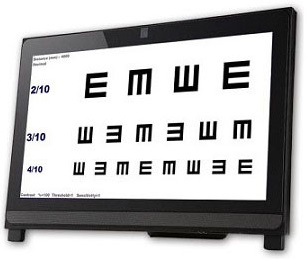Beena ChartRead More ... |


E Chart, one optotype

E Chart, single line

E Chart, multiple lines

Landolt's C Chart, single line

Lea symbols, single line

Visual psychometric function, optotype

Visual psychometric function, results page

Vision screening chart

Negative Chart, multiple lines

Deuchrome Test, multiple lines

Astigmatic Fan Chart

Paraboline Test

Marsden Dots

Worth dots

Iconometer for anisoconia

Phoria test

Ishihara color vision test

Ishihara color vision test

Farnsworth D-15 hue test

Lanthony 15-hue desaturated test

D-15 test results page

TNO stereo acuity test

TNO , quantitative evaluation pages

Video select page

Video display

